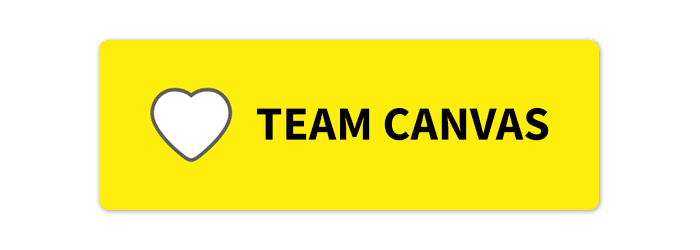We’ve heard it over and over again: Remote work is the future.
And what a bright future it is! Providing the option to allow workers to work remotely can lead to increased productivity as well as lower stress levels.

(Source)
Clearly, there is a problem here that needs to be solved. Remote work also has a dark side. A growing number of studies shows that one of the biggest challenges to distributed teams is none other than isolationism:
- According to the “2021 State of the Digital Workforce” report by Igloo Software, 75% of telecommuters feel left out in the workplace.
- The “State of Remote Work” survey by Buffer found that loneliness was number two in the list of top challenges that remote workers face.
- Another survey by Remoters indicated that lack of personal interactions was the biggest disadvantage when working from a distance.
Remote Teams Need Team Building
Team building might sometimes get a bad rap and, certainly, it is a tricky business with plenty of room to fail. In fact, some say that it’s a waste of time and money.
Perhaps, for you, like many others, team building brings up pictures of people bored to death, secretly looking at their phones, while other people are giving boring presentations they don’t want to give, secretly lamenting their lost weekend.
However, overpowering boredom is not always the case. Team building has also been called “one of the best investments you can make” as it has the potential to lead to higher productivity, higher revenue, better communication and it helps you attract talented people.
Besides, at a startup, the team is one of the most precious assets. So, helping employees bond can be even more important for a five-person company than for a 500,000-person company.
What Tools Can You Use For Remote Team Building?

1. Work Together While Staying In Control With ProofHub
A growing startup, with teams working remotely, needs a number of different tools for managing day to day tasks, teams, clients, communications, brainstorming, knowledge sharing, reviewing and reporting.
This is where the problem lies. Using too many tools means too many distractions, which leads to a downfall in productivity. Team members end up spending more time juggling among these different tools instead of doing what’s more important – their tasks.
Leaders have no control over what’s happening. Not to mention the cost of individually subscribing to all these apps.
What if there was a single tool that could help you do all of this, and that too at a fraction of the cost? With its powerful task management and collaboration features, ProofHub lets you bring your teams together to plan, collaborate, keep things organized and stay in ultimate control of everything.

2. Keep In Touch With Appear.In
A startup needs to squeeze as much as it can from its limited budget and time.
Productivity is crucial which means that interruptions — the biggest productivity killers have to be avoided. The obvious solution is to reduce communication and there are plenty of tools that enable you to do so. For example, you can run remote standups asynchronously. No need for your team to meet every morning at 9 am.
While less communication can be very convenient, especially for teams spread around the globe, it also creates a feeling of isolation. Everyone is working on their own. There is no watercooler to hang around and no co-workers to socialize with. No company lunches.
That’s why Hotjar runs a number of virtual team building activities like the 15-minute Coffee & Learn session in the Marketing department. After a scrum meeting, the team comes together for a coffee break and team members take turns delivering short presentations on what they do, what they know or who they are. According to the Hotjar blog, this tradition helps new hires feel engaged, while also creating a feeling of trust and safety.
Some of the tools you can use to keep in touch with your remote team are Calendly (for easy scheduling), Chanty (for simple team chat), and Appear.in (for video conferencing).

3. Share Knowledge With A Little Helpjuice
Occasional knowledge sharing like the Coffee & Learn sessions is a great start in team building. But, if you take it a step further and make knowledge sharing part of your culture, you can expect to bring your team even closer together.
Take mentoring as an example of continuous knowledge sharing. This study found that guidance from senior colleagues increases the mentee’s job satisfaction and performance. Another study found that people who mentor are less anxious and consider their job more meaningful.
It sounds great in theory but we come to startup constraints again. You probably can’t afford to assign a full-time mentor to each employee or spend all of your hours mentoring.
What if you used technology to make speed up the process? With tools like Helpjuice, you can create a knowledge base that contains your team’s collective expertise and is available to anyone at any time. Pair this with one-on-one mentoring and you’ve achieved the desired bonding effect faster.

4. Establish Team Culture With Team Canvas
It might seem counterintuitive for a startup to invest time in creating a company culture. However, if you research a bit, you will find that various sources recommend the same thing–decide on core values, mission, purpose, vision and team culture on day one.
Also, if you look at successful companies that were once small startups, you will see that they all have this special kind of cultural “glue” that keeps the people together.
Gary Vaynerchuck said it, too:
“Culture is the “heartbeat” of a company. It’s something that lights up the entire system. If a company has a great culture, it can be the backbone of their success.”
TOMS Shoes is one of the companies that is living proof of Gary Vee’s words. Back in 2006, TOMS Founder Blake Mycoskie traveled to Argentina where he saw thousands of children growing up without shoes. Determined to help, he started a company with the idea to donate one pair of shoes for each pair sold. The concept of giving back attracts customers and makes TOMS employees feel motivated at work.
So, yes, company culture, purpose and values can push your company and your team forward.
Lucky for you, setting up the foundation of your company culture doesn’t have to be a complicated task. You can get started with a simple tool like the Team Canvas.

5. Brainstorm Together With Miro
Brainstorming was invented back in 1939 by Alex F. Osborn to “ enhance the ability of workgroups to solve problems creatively”. Although it might not work in its original form, with certain modifications, brainstorming leads to enhanced creative thinking, a larger number of original ideas, while also bringing your team together.
Plus, research suggests that it works better online. So, brainstorming in a remote team can be a great bonding activity.
But what about the logistics? Coming up with new ideas is easy when you’re all standing in the same room with a shared whiteboard in front. Not so easy when you’re miles away from each other, standing in front of laptop screens.
Remote brainstorming may be difficult to organize but it’s certainly doable with the right tools. If you’re gathering to figure out a new product name, you can use just about any document management tool such as Google Docs or Notion. If you’re working on the user experience design of your product, you can use virtual whiteboarding software such as Miro.

6. Work In Pairs With Zoom
Working in pairs means that two professionals sit together at a single computer and work on a single project at the same time. But is this even possible in a remote team?
Actually, yes.
The development team at Very has managed to set up remote pair programming without a lot of effort. They use Zoom to share their screens and Atom + Teletype to collaborate on the code.
One of Very’s top tips is to make sure that your screen is easy to view by your pair. Sharing a 30-inch screen to a 15-inch laptop is probably not a good idea.

7. Show Your Appreciation With HeyTaco
Startups are famous for their high employee turnover rates. In fact, the IT industry has surpassed retail which has traditionally been the highest churn sector. This is hardly surprising, considering the dynamics of a newly born tech company. Startup life is not for the faint of heart.
That’s why it’s important to stop and thank your employees. Make them feel valued, show them you appreciate their hard work and they will stay with you longer. The gesture can be as small as sending them a quick thank you card or as grand as treating them with a thoughtful gift.
To take employee recognition a step further, you can follow Shopify’s lead and implement a peer review system. The e-commerce platform has developed its own internal Twitter-like feed (UNICORN) where employees show their appreciation for one another. Employee feedback about the system has been very positive so far and Shopify has almost no turnover.
But if you’re not up for developing your own in-house employee feedback tool, we suggest HeyTaco.
HeyTaco is a fun way to inspire team appreciation with a unique kindness currency…tacos! Anyone on your team can slack a teammate a taco to say good job! Built-in leaderboards and fun notifications make the app a delight.

8. Make Everyone Feel Engaged With Icebreakers
If you want your employees to feel as invested in your startup as you are, you have to engage them. This is how they become hyper-motivated, willing to go the extra mile, and committed to the success of the company. This is also how you get the manpower you need to scale your startup.
So, how does employee engagement translate to real-life activities? What exactly do you have to do?
Put on your recruiter’s hat and start researching games that your team will enjoy.
For example, you can do quick icebreakers before a virtual meeting like “Favorite Things” (suggested by Miro’s blog). It’s quite easy—just ask participants to name a favorite thing that’s related to the topic at hand. If you’re on a call with the developers to talk about new product features, you can ask each person to name the feature they felt most excited to work on.
Timely’s team also uses icebreakers to lighten the mood and build relationships. The company blog recommends games like themed quizzes, “Match the fact to the colleague”, “Would you rather”.
For more icebreaker ideas visit the motherload of icebreaker ideas, IcebreakerIdeas.com.

9. Meet Up In Real Life (One Day) With Donut
In the end, there is no online activity that can measure up to a real-life get-together. According to science, a face-to-face meeting has unique advantages:
- Shaking hands creates a feeling of reward
- Attention is much easier to sustain
- Groups are more likely to become tribes
So, if you want the people on your team to develop lasting relationships, you have to do a team retreat at least once a year. This is something that many distributed startup teams are aware of and doing on a regular basis.
For example, Jay Baer of Convince and Convert brings his team together annually, combining work and play—they spend two days working on strategy and two days getting to know each other.
Zapier organizes regular team retreats with cooking, games and lots of other team-building activities. The list goes on and on, featuring companies like Buffer, Baremetrics, and Close.io.
But you don’t have to throw a company retreat. Simply having your team members who don’t know each other well meet up every now and then can help build trust and collaboration across your organization. And that’s were Donut comes in to make the process fun and easy.
Wrapping Up
Working remotely has a number of benefits for both startups and their employees. It’s convenient, cost-effective and stress-free. The problem is that, in a distributed team, people can start feeling lonely which undermines their motivation. That’s why remote teams need team building.
Due to limited communication options, remote team building may be a bit difficult. Still, there are many ways to engage your people, help them bond and make them feel excited about their work.
From simple icebreaker games and virtual coffee breaks to working in pairs, there are plenty of tools and tactics to build a team that’s more than a group of strangers.
Editor’s Note: This article is part of the blog series Run Your Business brought to you by the marketing team at UniTel Voice, the virtual phone system priced and designed for startups and small business owners.






